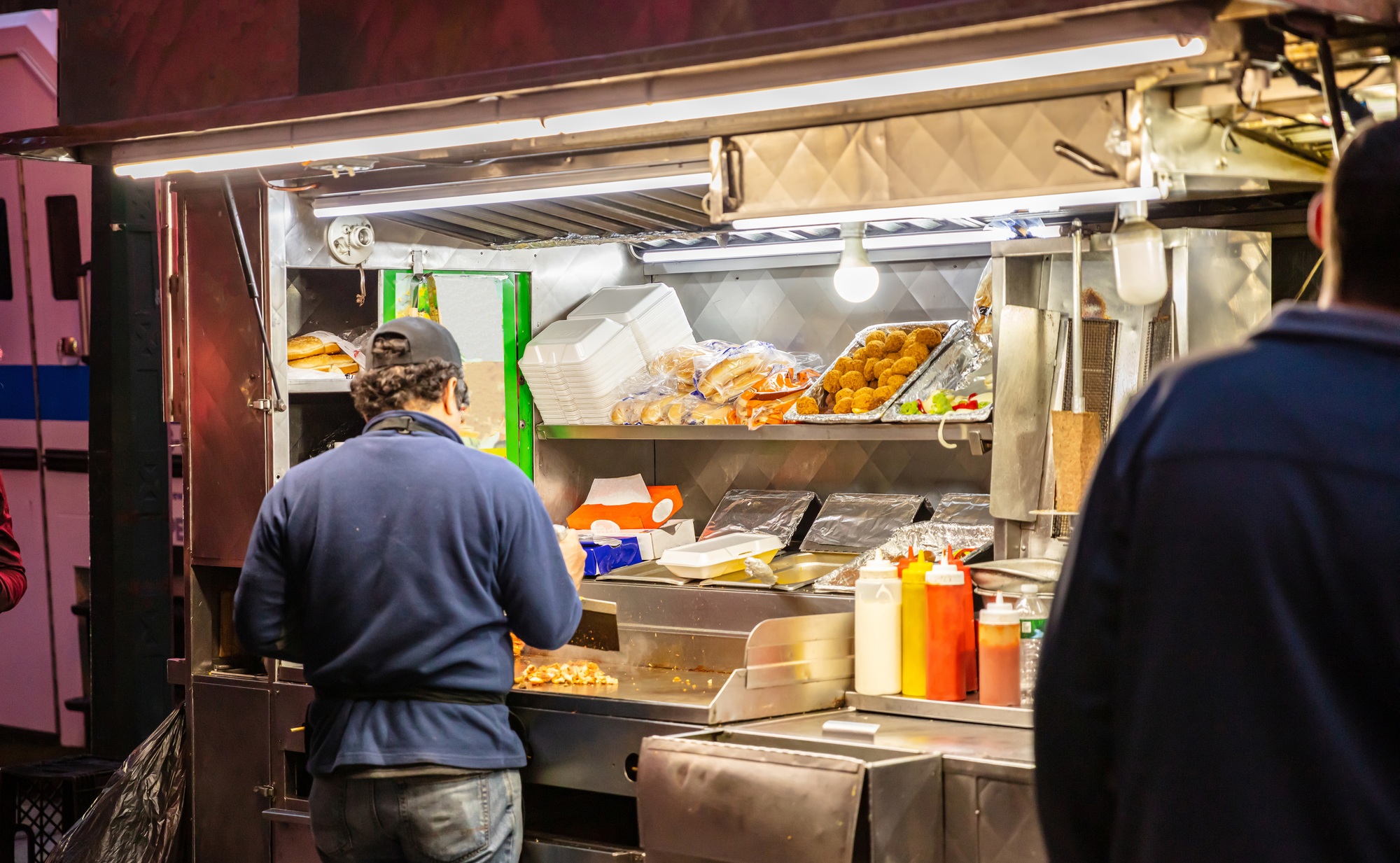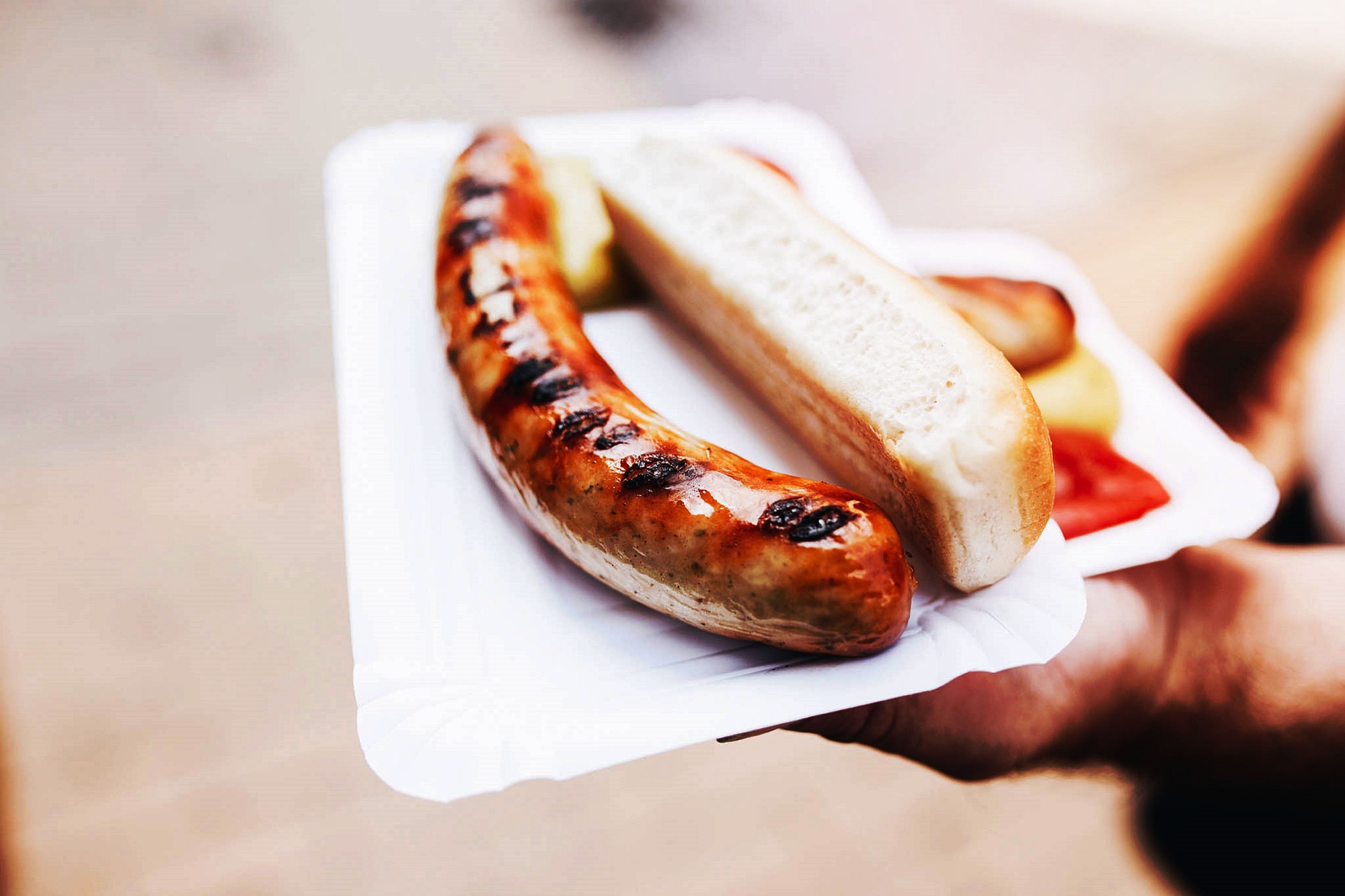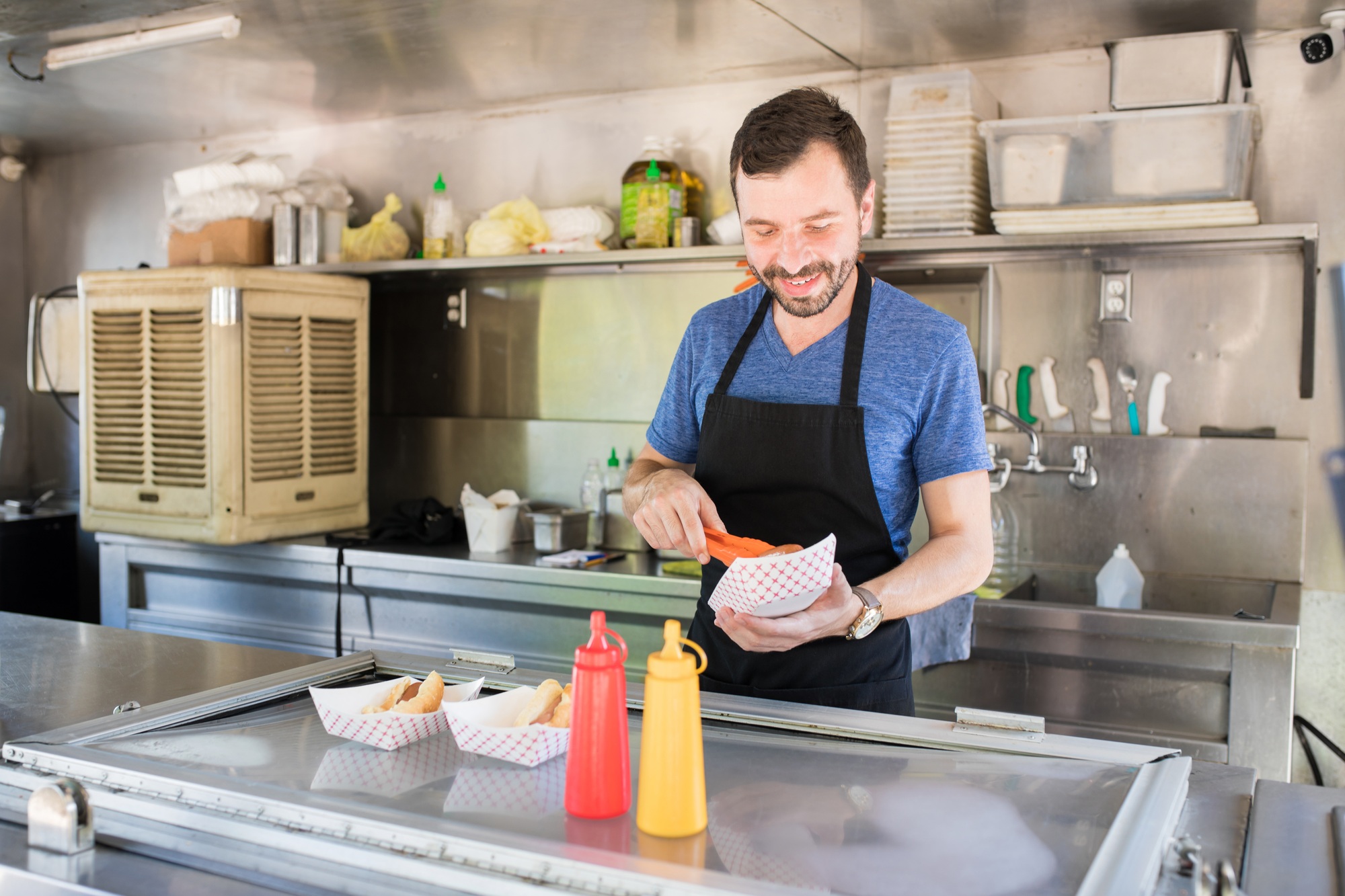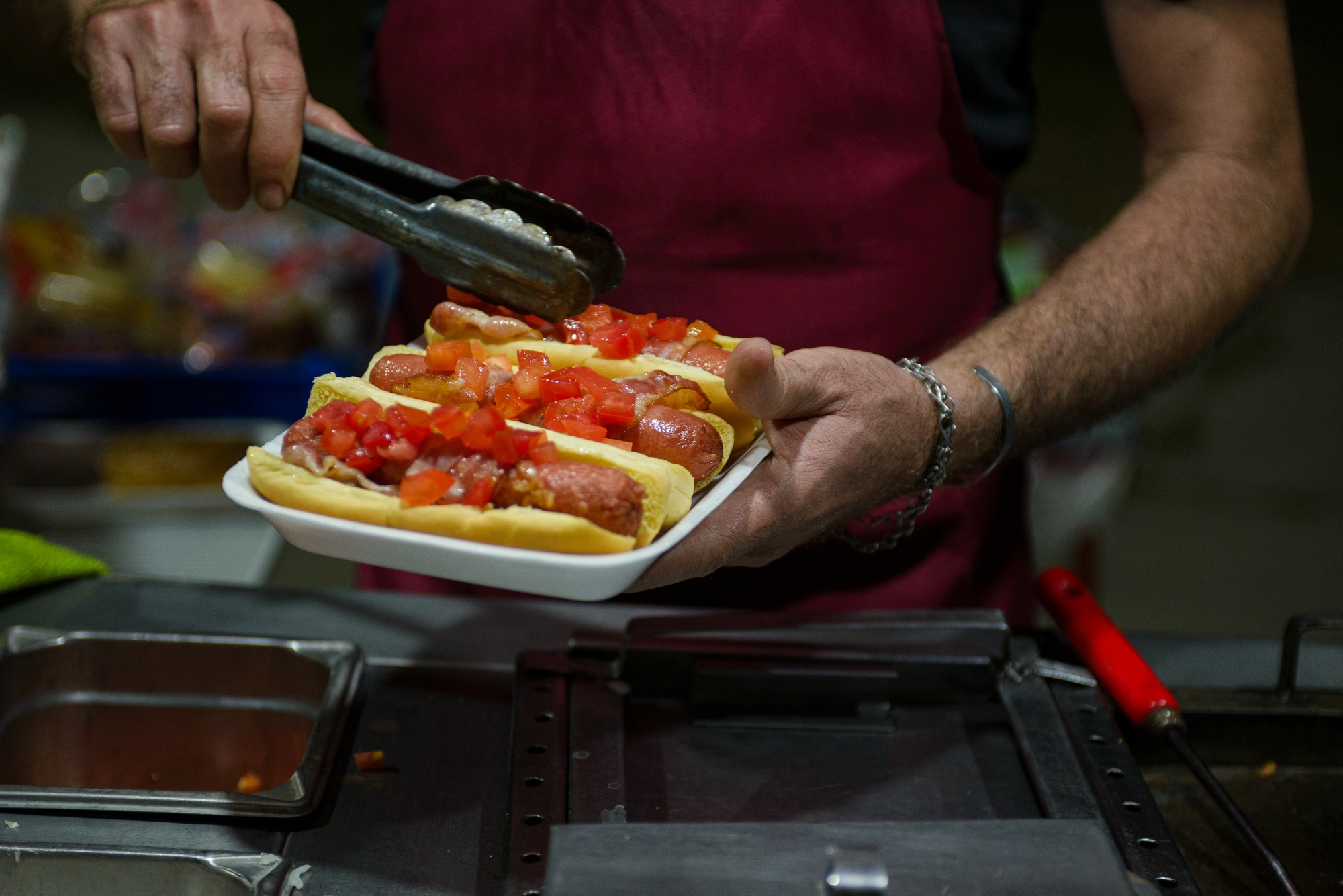Key Takeaways

- Understand Regulations: Research local permits, licenses, and health regulations necessary to legally operate your hot dog stand.
- Choose Strategic Locations: Select high-traffic areas like parks and festivals to maximize visibility and customer footfall.
- Invest in Equipment: Acquire essential equipment, including a hot dog cart and cooking tools, that comply with health standards to ensure efficient service.
- Source Quality Ingredients: Use high-quality hot dogs and fresh toppings from reputable suppliers to enhance your menu and attract repeat customers.
- Implement Effective Marketing: Create a strong brand identity and utilize social media to promote your offerings and engage with the local community.
- Prioritize Customer Service: Deliver friendly and efficient service to enhance customer satisfaction and loyalty, encouraging positive word-of-mouth for your stand.
Dreaming of running your own hot dog stand? You’re not alone. This classic street food business has captured the hearts (and appetites) of many aspiring entrepreneurs. With low startup costs and the potential for high profits, a hot dog stand can be your ticket to financial freedom and community connection.
How to Start a Hot Dog Stand

Starting a hot dog stand requires careful planning and execution. Follow these essential steps to launch your small business successfully.
- Research local regulations: Understand permits and licenses required for operating a food stand. Some municipalities mandate health inspections and specific permits.
- Choose a location: Select high-traffic areas such as parks, festivals, or busy streets. Visibility increases foot traffic and sales potential.
- Acquire equipment: Purchase or lease a hot dog cart or stand. Ensure it complies with health regulations and includes necessary equipment like grills, coolers, and utensils.
- Source supplies: Obtain quality hot dog products and condiments from reputable suppliers. Consistency and taste attract repeat customers.
- Set competitive prices: Analyze competitors’ pricing in your area. Position your prices to balance affordability and profitability.
- Create a marketing strategy: Utilize social media platforms to promote your stand. Effective marketing increases awareness and customer engagement.
- Offer unique options: Differentiate your menu with specialty hot dogs or unique toppings. Creative offerings can draw attention and boost sales.
- Provide excellent service: Friendly and efficient service enhances customer experience. Satisfied customers return and recommend your stand to others.
By following these steps, you position your hot dog stand for success in the competitive small business landscape.
Research and Planning

Research and planning form the foundation of your small business. Understanding market demands and target customers lays the groundwork for your hot dog stand’s success.
Understanding the Hot Dog Business
Understanding the hot dog business involves analyzing the industry landscape and identifying best practices. Examine local competitors to gauge their offerings and pricing strategies. Evaluate customer preferences regarding flavors and styles of hot dogs. Investigate the most efficient service styles, such as fast casual or gourmet preparations, optimizing customer satisfaction and service speed.
Identifying Your Target Market
Identifying your target market clarifies your customer base. Assess demographics in potential locations, focusing on age, income, and lifestyle factors. Identify areas with high foot traffic and specific customer preferences. Collect data at local events, fairs, and sporting events to understand customer behavior and needs better. Tailor your marketing efforts to reach your niche effectively.
Creating a Business Plan
Creating a business plan serves as a roadmap for your hot dog stand. Detail your unique selling propositions, including special recipes or exceptional customer service. Outline operational processes and financial projections, ensuring clarity on startup costs, pricing structures, and inventory management. Establish goals for growth and timelines for assessing your small business performance.
Legal Requirements

Understanding legal requirements is essential when starting your hot dog stand. Complying with local regulations ensures a smooth operation of your small business while avoiding potential setbacks.
Permits and Licenses
You require several permits and licenses to operate a hot dog stand legally. A general business license is necessary and can be obtained through your city or county department of licensing and inspections. Additionally, most jurisdictions demand a food vending license, which involves contacting the local health department to meet specific criteria, including providing your menu and price list. A food handler’s permit may also be mandatory; this ensures a certified food handler is on-site. Obtaining a health department permit is crucial, as passing a health inspection confirms compliance with essential health and safety regulations.
Health and Safety Regulations
Health and safety regulations govern the operation of your hot dog stand. Compliance with these standards protects your customers and ensures your business operates legally. You must maintain proper food storage and cooking temperatures to prevent foodborne illnesses. Regular inspections by local health authorities will ensure ongoing compliance with these regulations.
Insurance Considerations
Proper insurance protects your small business from unforeseen events. Obtain general liability insurance to cover potential accidents and claims related to your hot dog stand. Additionally, consider property insurance to protect your equipment and supplies from damage. Evaluating insurance needs early helps minimize risks associated with operating your business.
Materials and Equipment

Essential materials and equipment play a crucial role in the success of your hot dog stand. Properly chosen items enhance efficiency and customer satisfaction.
Essential Equipment for Your Stand
- Hot Dog Grill or Rollers: These units are vital for cooking your hot dogs evenly. Choose from flat-top rollers, slanted top rollers, or rollers with bun holders. Many models hold 10 to 75 hot dogs and can maintain a temperature of at least 145 degrees Fahrenheit.
- Hot Dog and Bun Steamers: These devices ensure that hot dogs and buns remain warm and ready for your customers.
- Food Warmers and Cabinets: Essential for keeping hot dogs and other items warm throughout the day. Look for options with efficiency and easy access for serving.
- Hot Dog Merchandisers: Compact units that both cook and preserve warmth for hot dogs and buns. Features often include insulated glass, stainless steel pans, and bun drawers to enhance presentation.
- Hot Dog Carts: All-in-one solutions that allow you to cook, hold, and sell hot dogs conveniently, making your operations mobile.
Sourcing Quality Hot Dogs and Toppings
Sourcing quality hot dogs and toppings significantly impacts your stand’s reputation and sales. Select reputable suppliers who provide high-quality meats and fresh ingredients. Explore local vendors to find unique flavors and toppings that distinguish your offerings. Varieties like classic beef, turkey, or vegan options appeal to diverse customer preferences. Premium toppings including artisan condiments, fresh vegetables, and specialty cheeses can elevate your menu and drive repeat business.
Other Supplies You’ll Need
Other necessary supplies include napkins, paper plates, and cutlery for customer convenience. Stock additional items such as condiment dispensers, signage, and storage containers for efficient operation. Ensure you have adequate inventory so you can serve customers promptly during busy hours. Consider safety equipment like gloves and hand sanitizers for compliance and hygiene.
Setting Up Your Hot Dog Stand

Setting up your hot dog stand involves critical decisions about location, design, and operational layout. Each aspect contributes significantly to the success of your small business.
Choosing a Location
Select locations with high foot traffic. Opt for areas such as parks, busy streets, office complexes, and popular tourist attractions. Identify parking lots of large retail stores and university campuses as additional lucrative spots. Maximize visibility and accessibility; position your stand in well-lit areas for ease of access. Avoid proximity to competing food businesses to enhance market presence. Consider temporary locations during events like festivals, sporting activities, or charity events for added exposure. Verify with local authorities regarding necessary location licenses to comply with regulations.
Designing Your Stand
Create an inviting design for your hot dog stand. Utilize bright colors and clear signage to attract customers. Incorporate a simple, clean layout for easy navigation. Ensure the design allows for visibility of your menu from a distance. Include a designated space for condiment dispensers and napkins to facilitate customer service. Optimize the stand for mobility if you plan to set up in various locations or events. Attractive displays of your unique offerings can further engage potential customers and increase sales.
Setting Up Your Cooking and Serving Area
Establish an efficient cooking and serving area to streamline operations. Use equipment such as hot dog grills or rollers, steamers, and food warmers for optimal food preparation and preservation. Organize tools and supplies for quick access; arrange hot dogs, buns, condiments, and other toppings logically. Ensure adherence to health and safety standards by installing necessary food safety equipment and maintaining hygiene practices. Designate an area for customer interaction for smooth transactions and faster service delivery. Cleanliness and efficiency significantly enhance the overall customer experience at your hot dog stand.
Marketing Your Hot Dog Stand

Effective marketing strategies enhance visibility and grow your customer base, ensuring your small business thrives.
Creating a Brand Identity
Establish a unique brand identity that resonates with customers. Choose a memorable name that reflects your offerings. Incorporate eye-catching colors and a fun logo to attract attention. Position your stand as friendly and inviting. Ensure continuity in branding across all materials, including menus, business cards, and signage, for a cohesive experience.
Promoting Your Stand Locally
Engage with your local community to generate interest. Distribute flyers in nearby neighborhoods and offices. Attend local events to showcase your products. Collaborate with neighboring businesses for cross-promotions, enhancing visibility. Offer free samples during peak hours to entice new customers. Create special promotions based on local happenings to drive traffic and increase sales.
Utilizing Social Media and Online Marketing
Leverage social media platforms to connect with a larger audience. Create business profiles on popular platforms to share daily specials, menu items, and location updates. Use engaging visuals like photos of your hot dogs and customer experiences to capture attention. Encourage customer feedback and reviews to build credibility. Implement targeted online ads to reach specific demographics interested in local dining options, maximizing your marketing impact.
Best Practices for Running a Successful Hot Dog Stand

Successful operation of a hot dog stand hinges on effective strategies across several key areas. Below are best practices to ensure your small business thrives.
Customer Service Tips
- Engage with customers by being friendly and approachable. A simple smile and greeting can enhance the customer experience.
- Listen to customer feedback actively. This approach helps in refining your menu and service.
- Educate customers about your offerings. Providing information on unique toppings or specialties creates interest.
- Respond promptly to any issues or complaints. Efficient problem-solving fosters customer loyalty.
Pricing Your Products
- Research competitor pricing regularly. This strategy ensures your prices remain competitive in the local market.
- Analyze your costs to determine the baseline pricing. Consider expenses such as supplies, permits, and equipment.
- Establish tiered pricing based on product variety. For example, premium toppings or specialty hot dogs can warrant higher prices.
- Adjust prices seasonally or during events for optimal revenue. Capitalizing on high foot traffic allows for strategic price increases.
Keeping Your Stand Clean and Organized
- Organize your work area effectively. A clean and organized stand facilitates efficient service and enhances customer satisfaction.
- Implement a cleaning routine for equipment and surfaces. Regular sanitation helps meet health standards and keeps food safe.
- Stock necessary supplies neatly and visibly. Maintaining an orderly stock of condiments, napkins, and utensils improves accessibility.
- Train staff on hygiene and organization practices. Proper training ensures compliance with health regulations and promotes a professional atmosphere.
Troubleshooting Common Issues

Addressing common challenges contributes significantly to running a successful hot dog stand. Here are strategies for managing weather challenges, inventory shortages, and customer complaints effectively.
Dealing with Weather Challenges
Prepare for unfavorable weather conditions by investing in a durable canopy or tent to protect your stand and customers from rain or sun. Adapt your service approach based on the weather; for example, during colder months, offer warm drinks alongside hot dogs to attract business. Monitor local forecasts consistently to anticipate changes. If extreme weather hampers foot traffic, consider rerouting marketing efforts through social media, promoting special offers to entice customers indoors.
Managing Inventory Shortages
Track inventory meticulously to avoid shortages during peak hours. Conduct regular audits to determine product levels and reorder supplies promptly. Establish relationships with multiple suppliers to secure backup options if one source encounters issues. Utilize storage efficiently; consider investing in refrigeration or freezers to extend the shelf life of perishable items. Adopt a “first in, first out” approach to inventory management, ensuring older products are sold first to minimize waste.
Handling Customer Complaints
Respond promptly to customer complaints to maintain satisfaction. Listen actively to understand their concerns and acknowledge their feedback. Avoid defensive reactions; instead, present solutions, such as replacing unsatisfactory products or offering discounts. Train staff on effective communication techniques to handle disputes with professionalism. Create a follow-up system to ensure the resolution meets customer expectations. Building rapport and trust through effective complaint management fosters long-term loyalty to your hot dog stand business.
Conclusion

Starting a hot dog stand can be an exciting and rewarding venture. With the right planning and execution you can create a business that not only generates income but also brings joy to your community. Focus on understanding your market and maintaining high standards in quality and service.
Embrace creativity in your menu and marketing strategies to stand out from the competition. Remember that customer engagement and satisfaction are key to building loyalty and driving repeat business. As you embark on this journey keep your goals clear and stay adaptable to the challenges that may arise. Your hot dog stand could be the next local favorite.
Frequently Asked Questions

What are the benefits of starting a hot dog stand?
Starting a hot dog stand offers low startup costs and the potential for high profits. It’s an accessible business for aspiring entrepreneurs to achieve financial independence while engaging with the community.
What do I need to start a hot dog stand?
To start a hot dog stand, you’ll need to research local regulations, obtain necessary permits, choose a high-traffic location, acquire compliant equipment, source quality supplies, and develop a marketing strategy.
How do I choose the right location for my hot dog stand?
Look for high-traffic areas such as parks, busy streets, or event venues, ensuring your stand is visible and accessible to maximize customer interaction and sales opportunities.
What permits do I need to operate a hot dog stand?
You’ll need a general business license and a food vending license. Compliance with local health department regulations is essential, as is maintaining health and safety standards during inspections.
How can I market my hot dog stand effectively?
Create a unique brand identity with an eye-catching name and logo. Promote your stand through local flyers, events, and social media to connect with customers and share updates on specials.
What are key customer service tips for a hot dog stand?
Engage with customers, listen to their feedback, and educate them about your menu. A clean, organized stand and friendly service are crucial for maintaining customer loyalty and satisfaction.
How do I handle challenges like weather and inventory shortages?
Invest in durable canopies to protect against weather conditions. Track your inventory closely, and develop relationships with multiple suppliers to avoid shortages.
What supplies do I need for a hot dog stand?
Key supplies include hot dog grills, steamers, food warmers, condiment dispensers, napkins, and hygiene safety equipment to ensure compliance and quality service.
Image Via Envato: AnnaStills, ivanmorenosl, sandorfotografia, tonodiaz, Pressmaster, mstandret, wirestock, DragonImages, westend61, rawf8, KostiantynVoitenko



